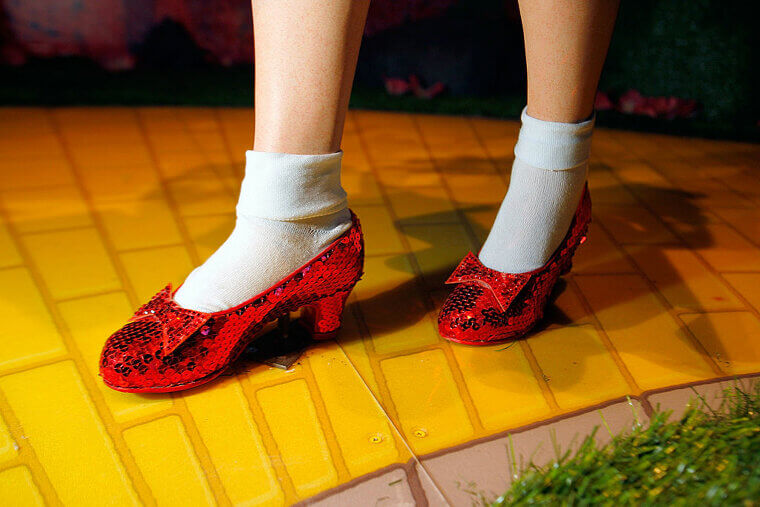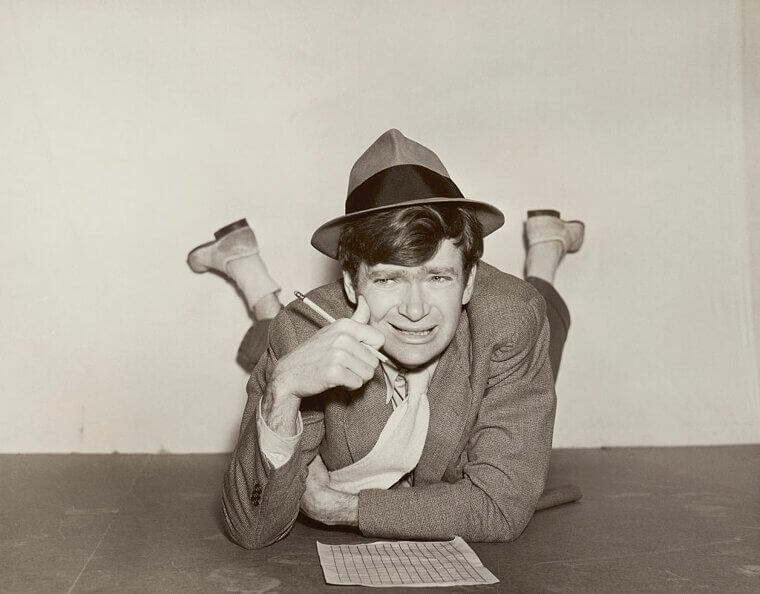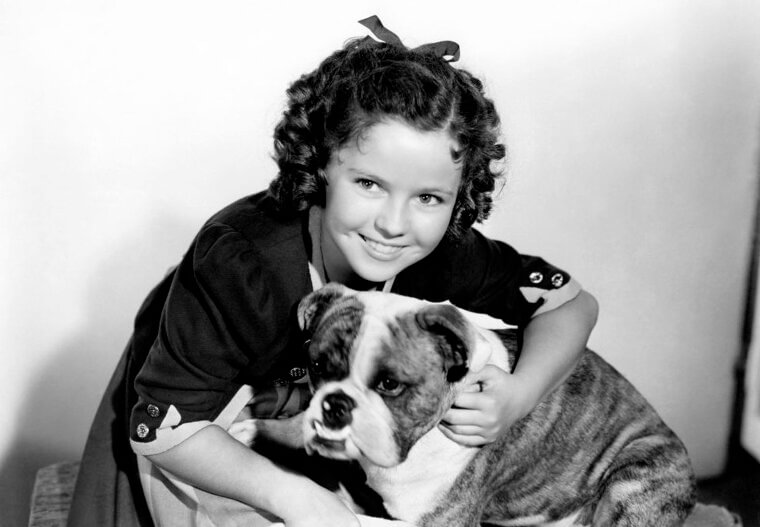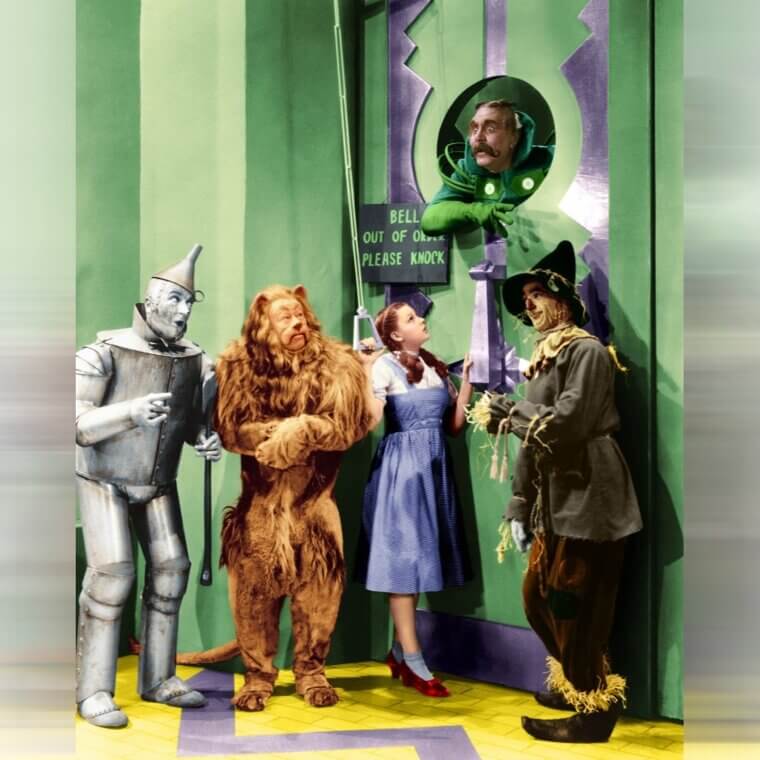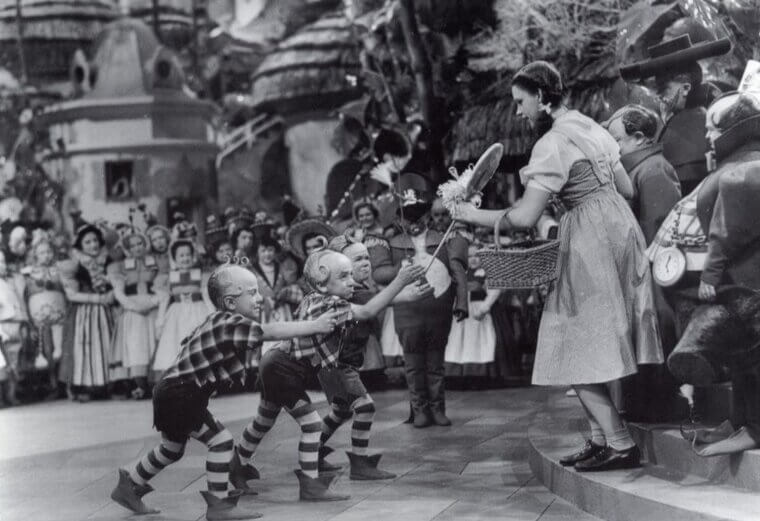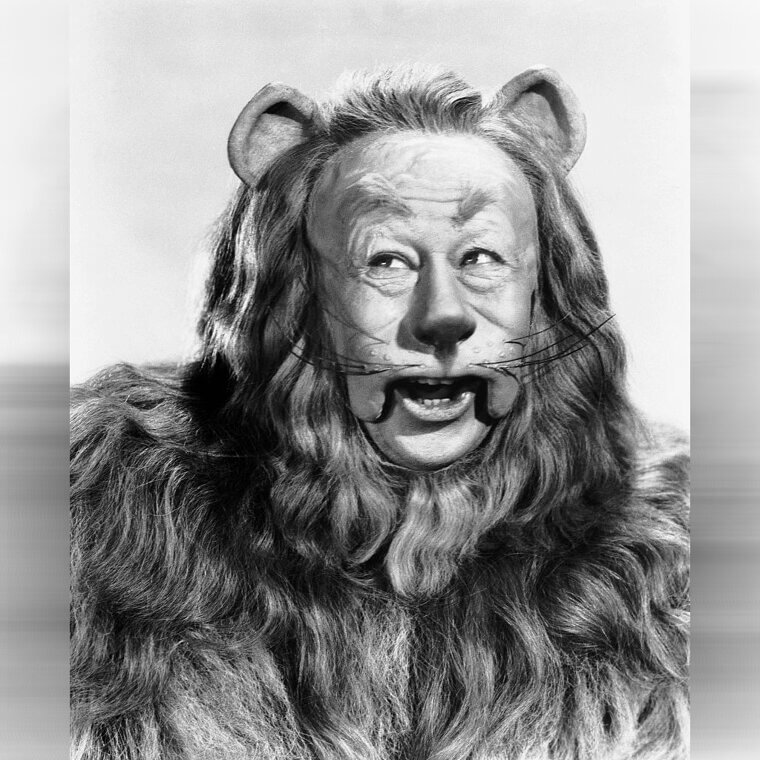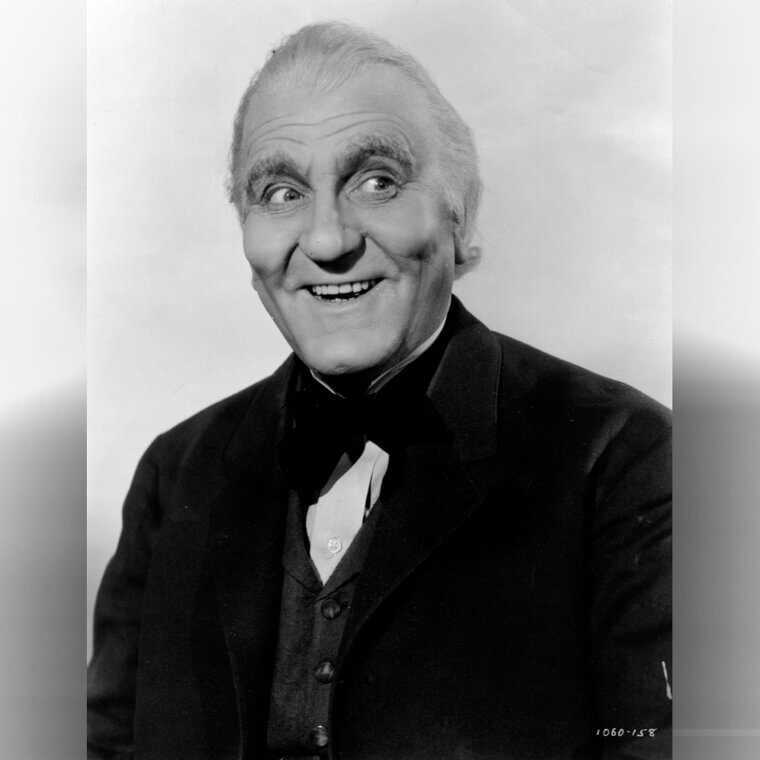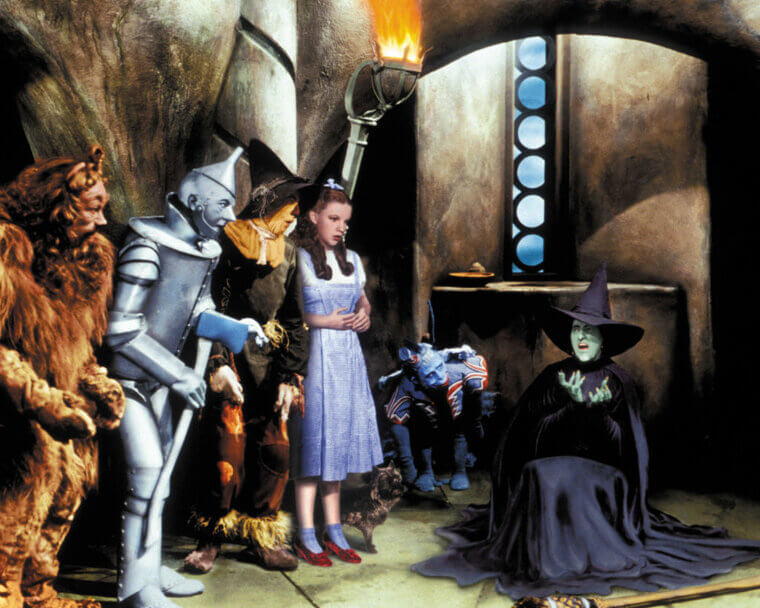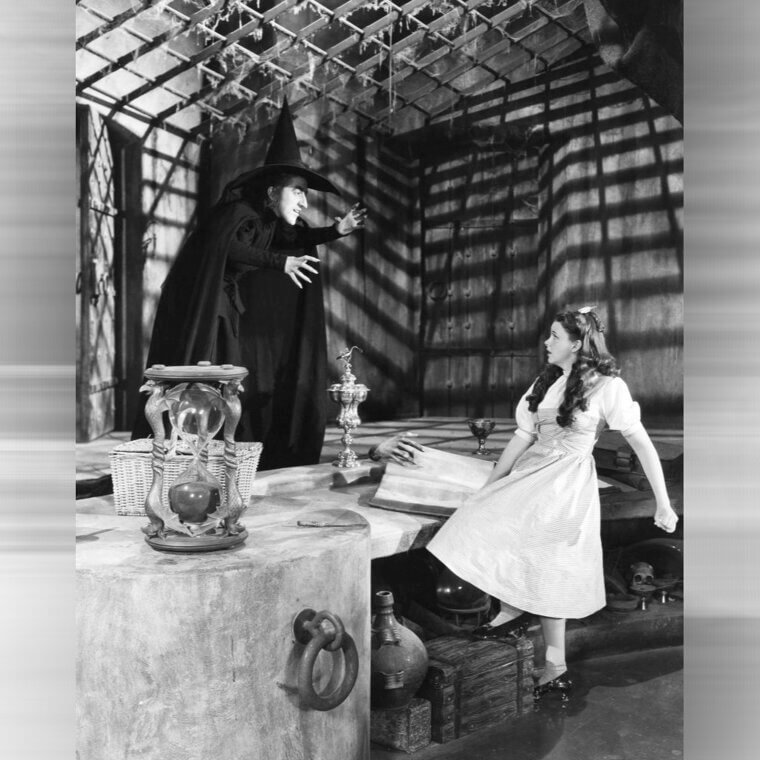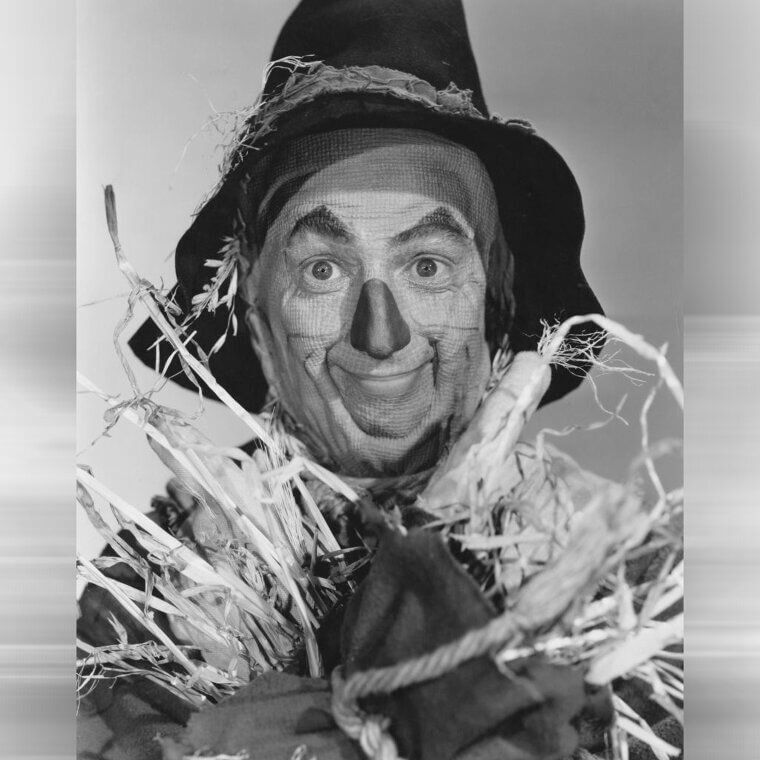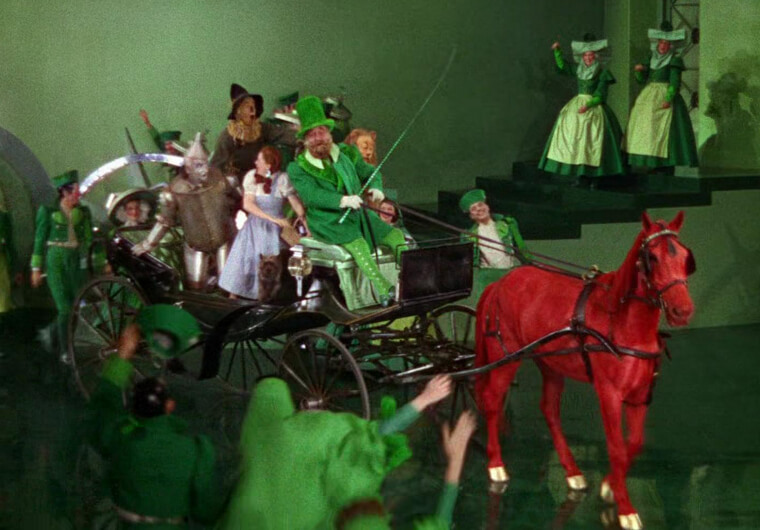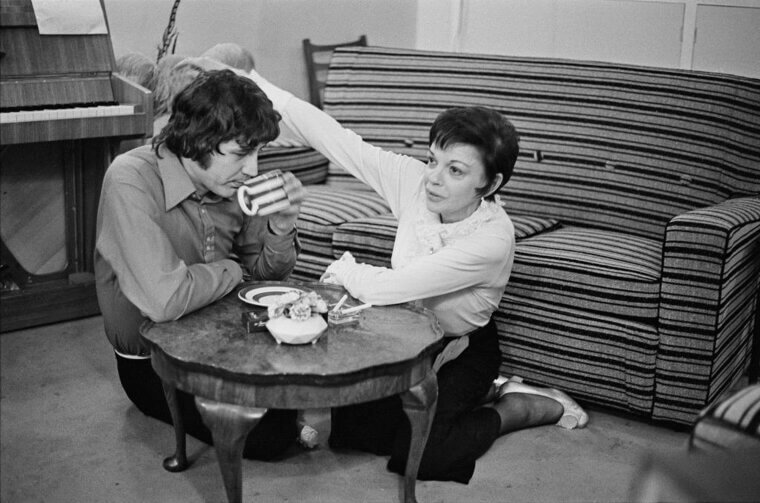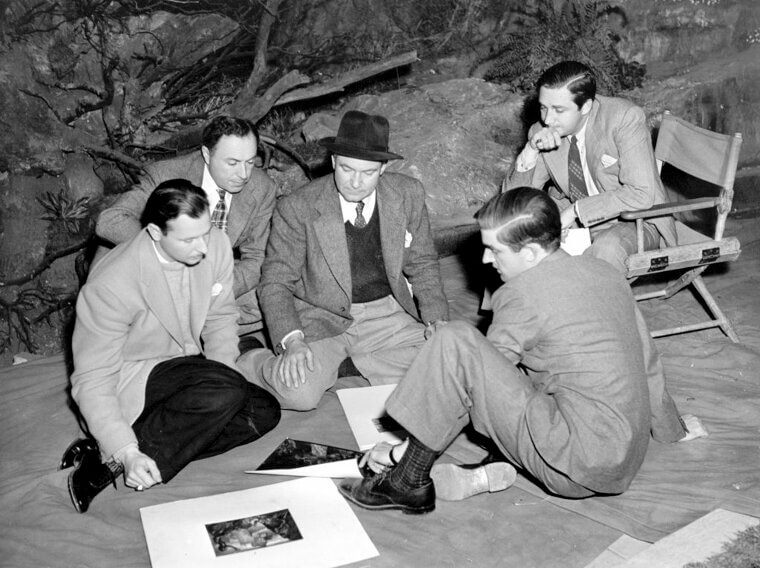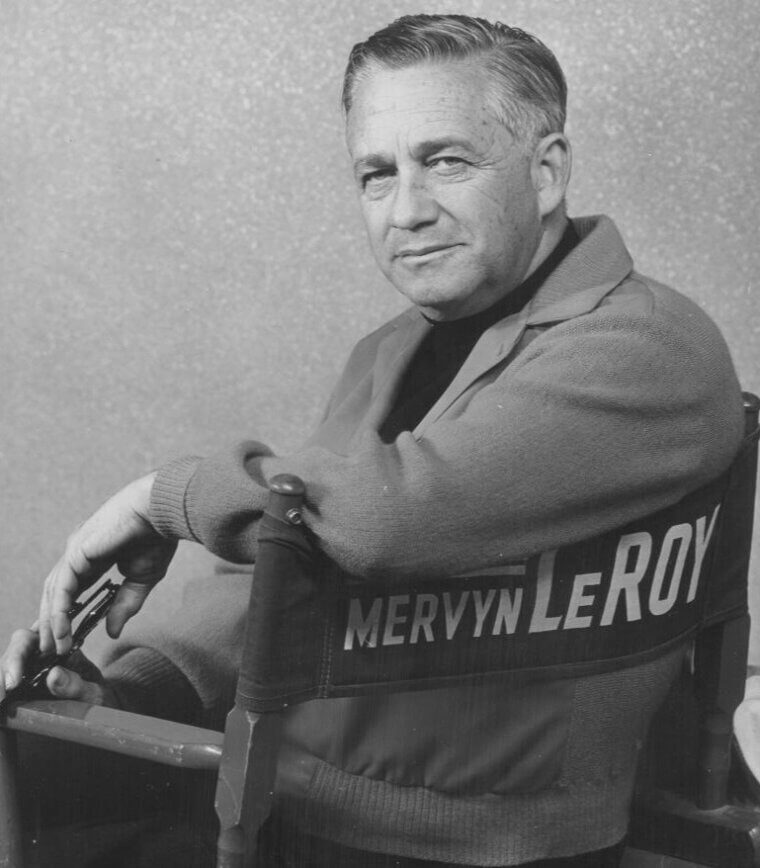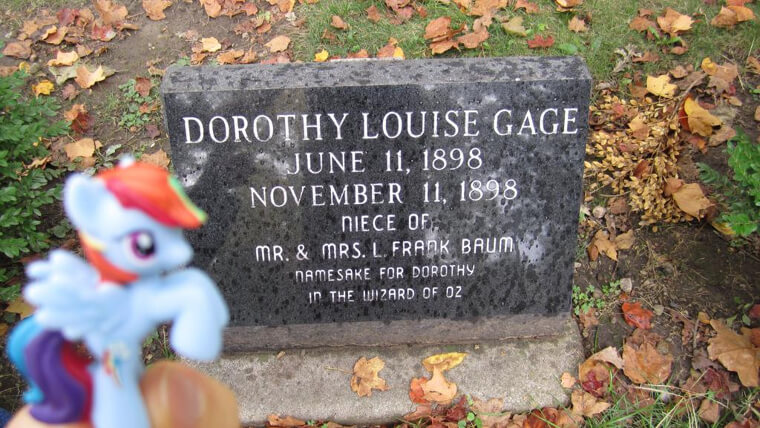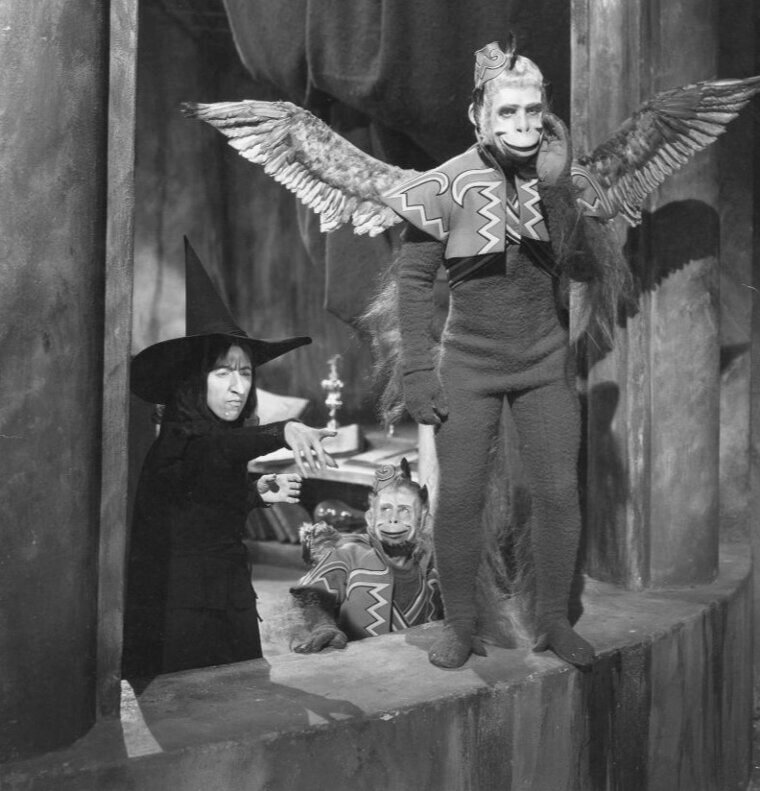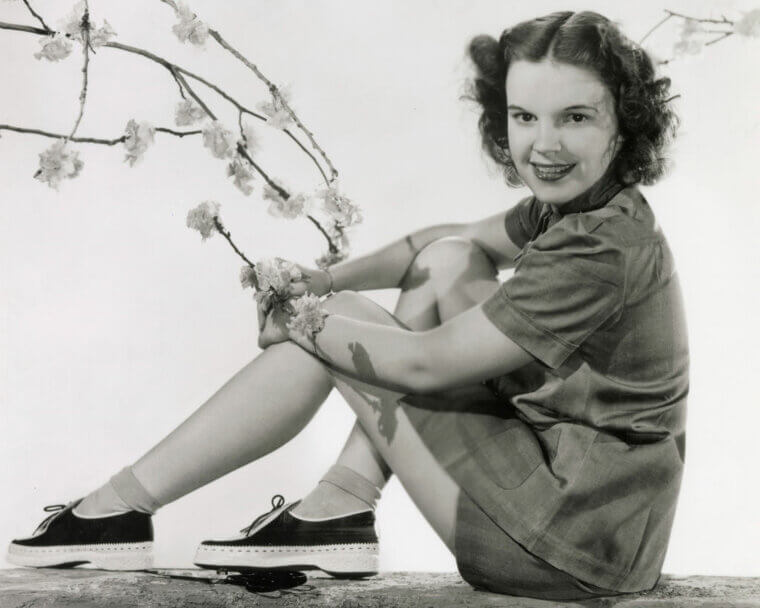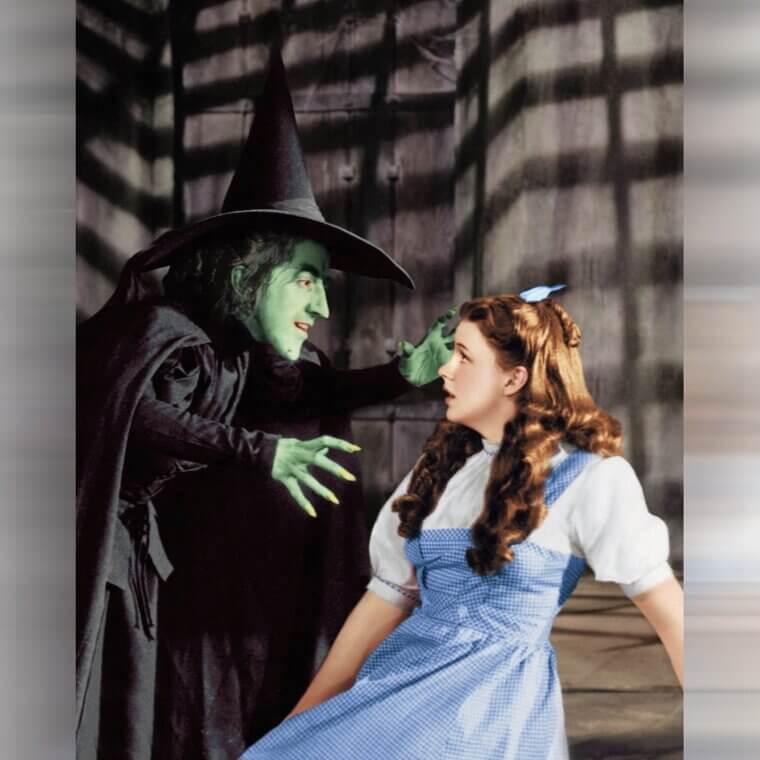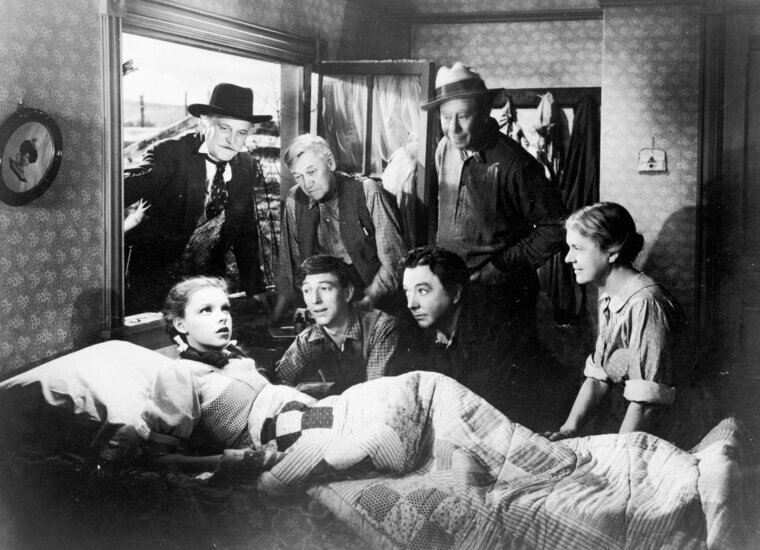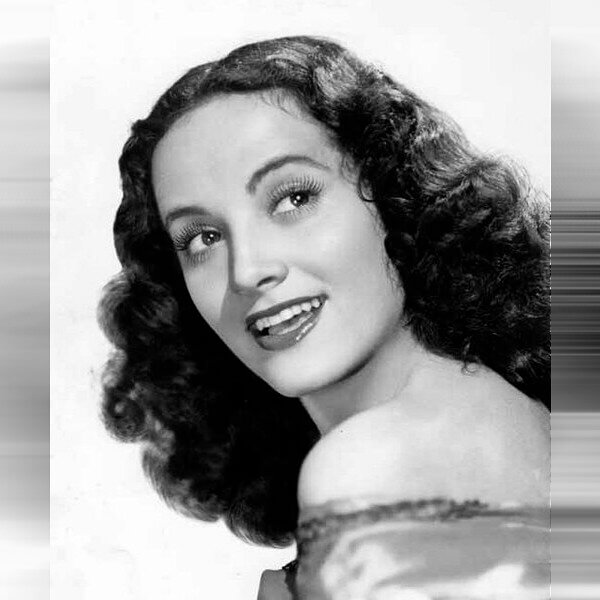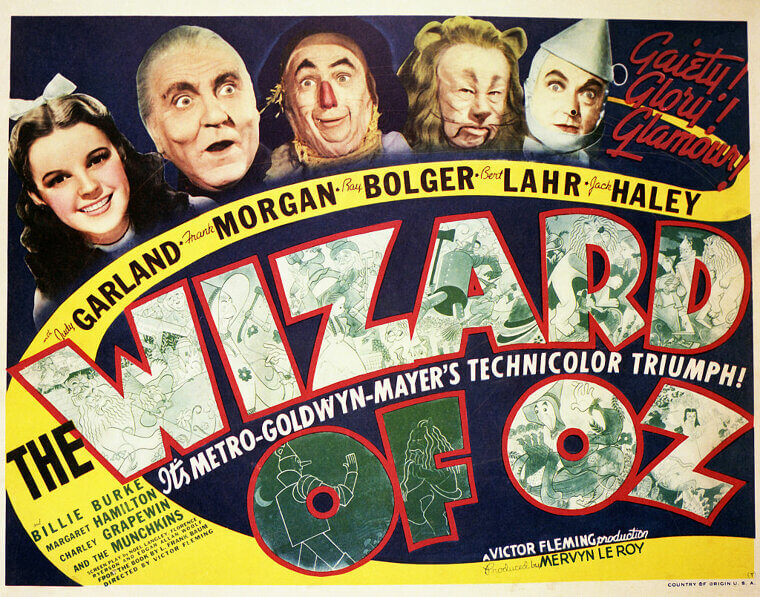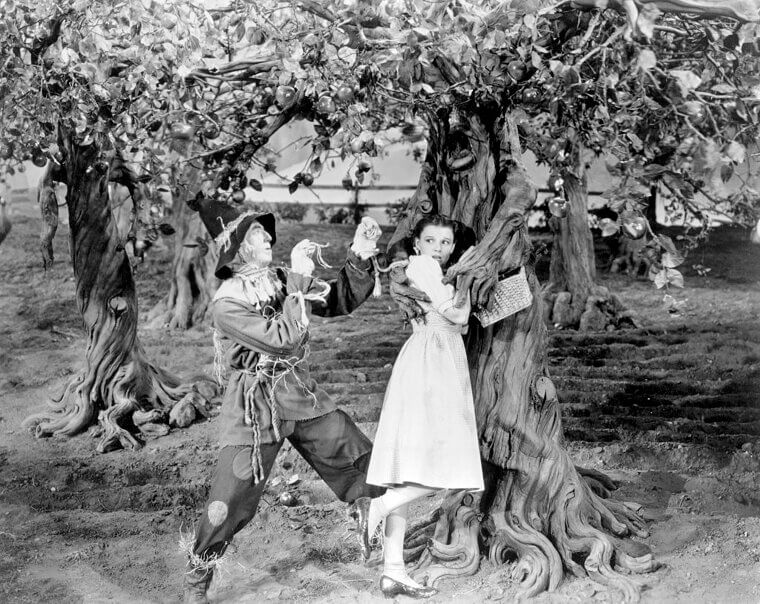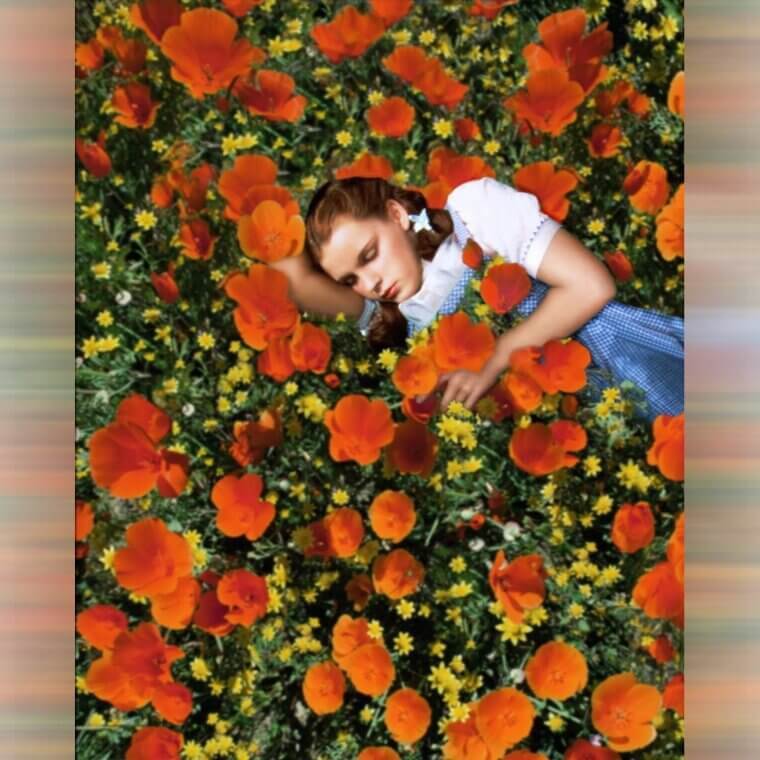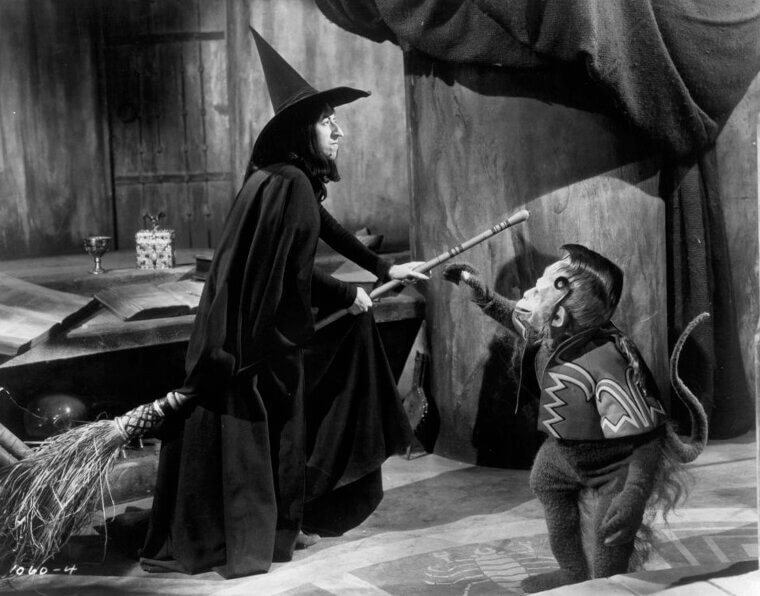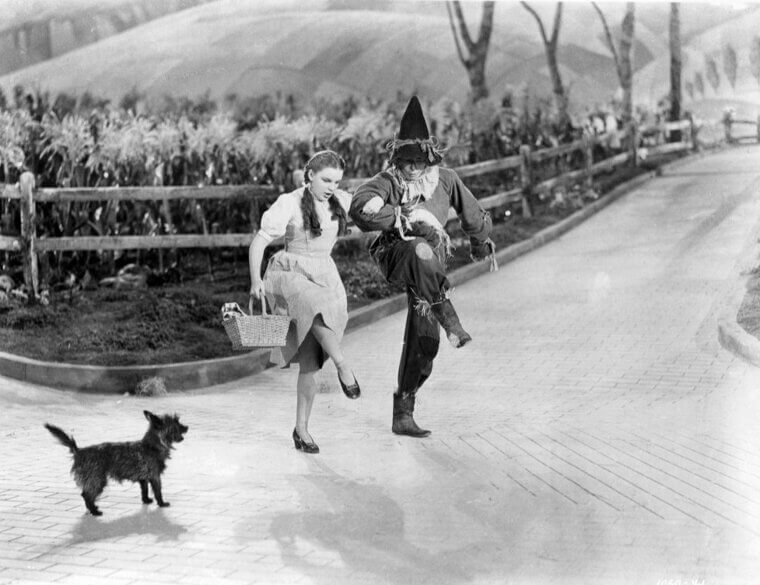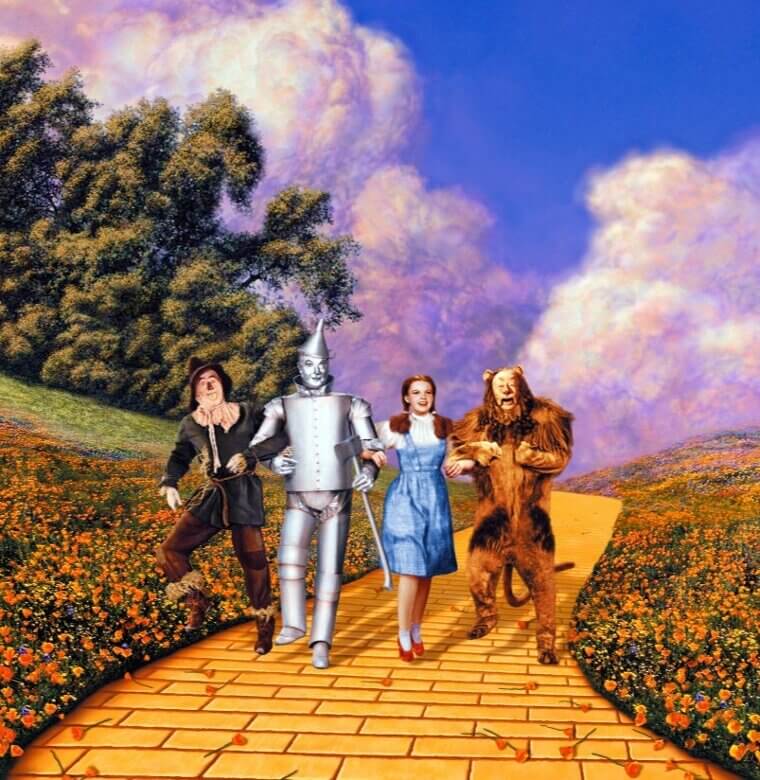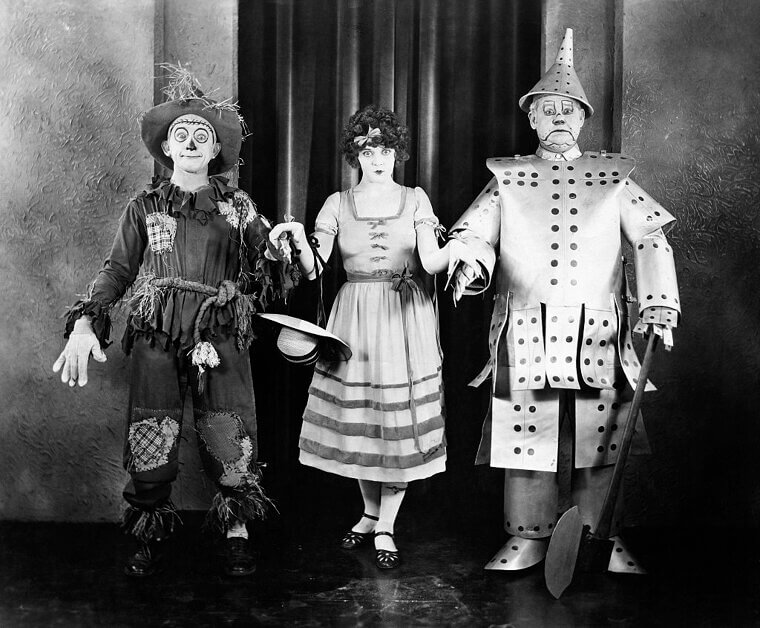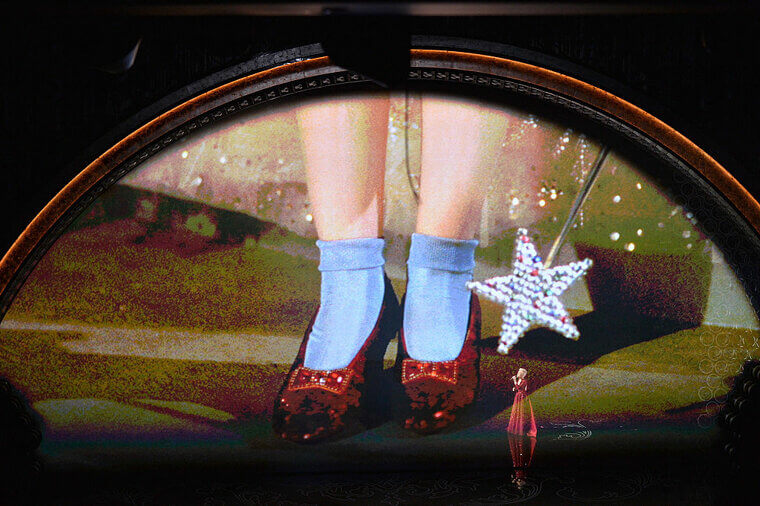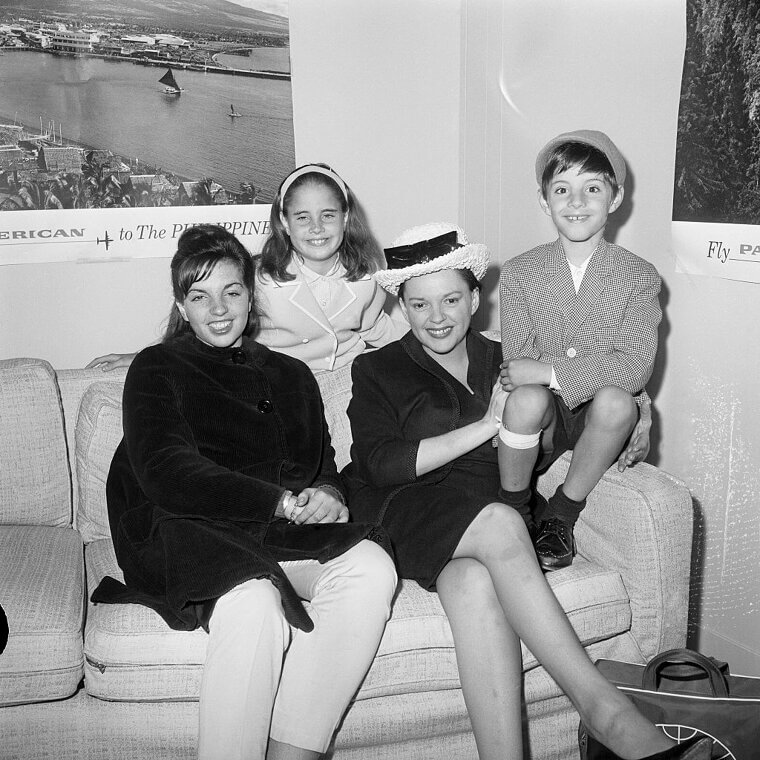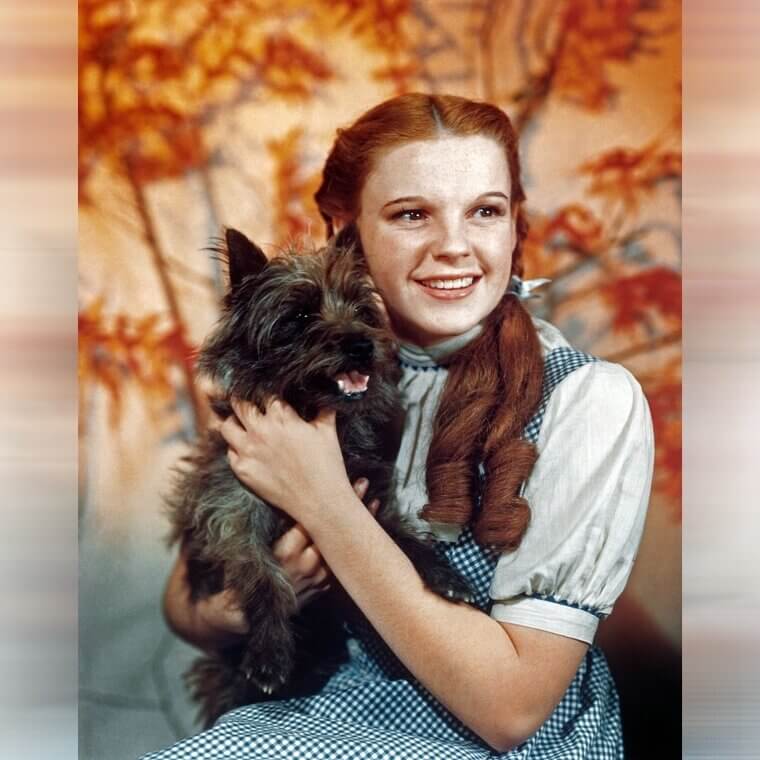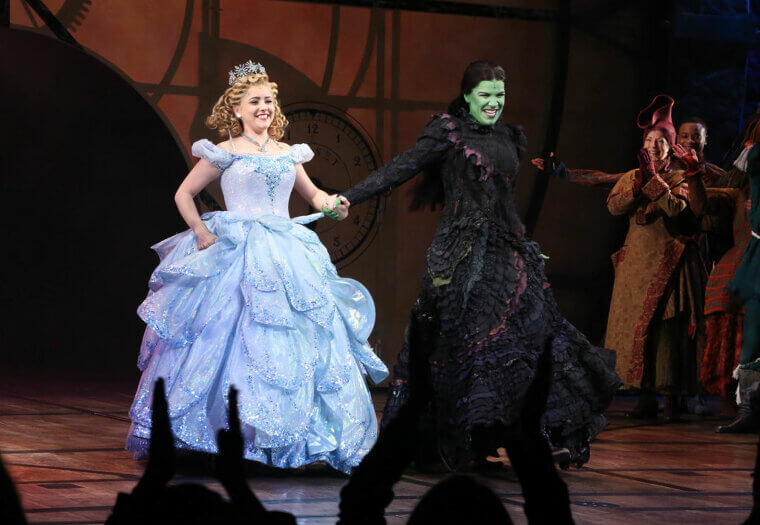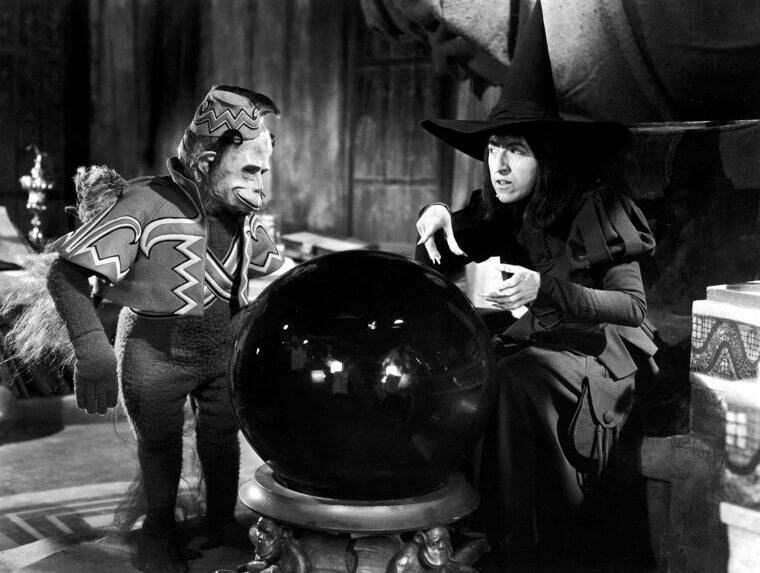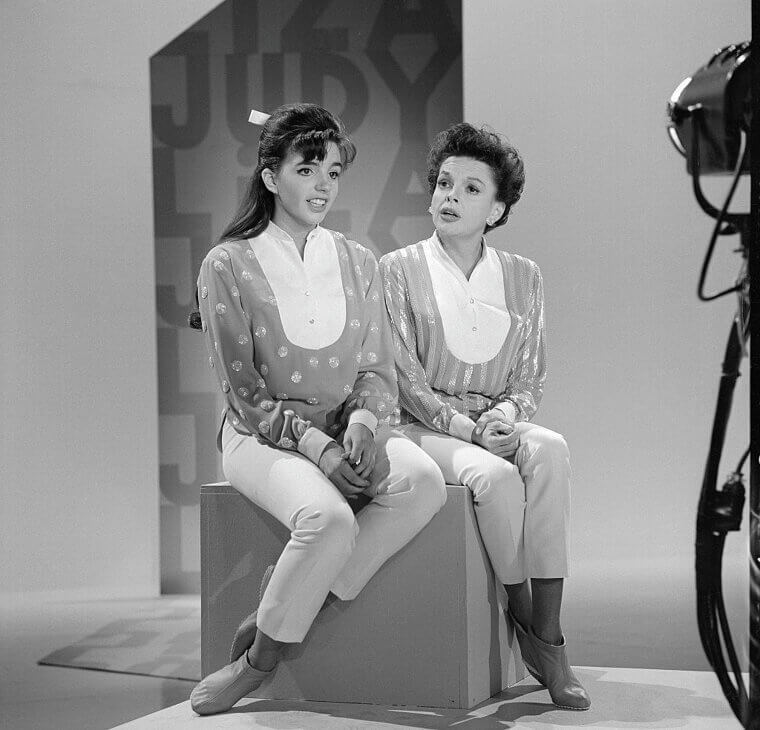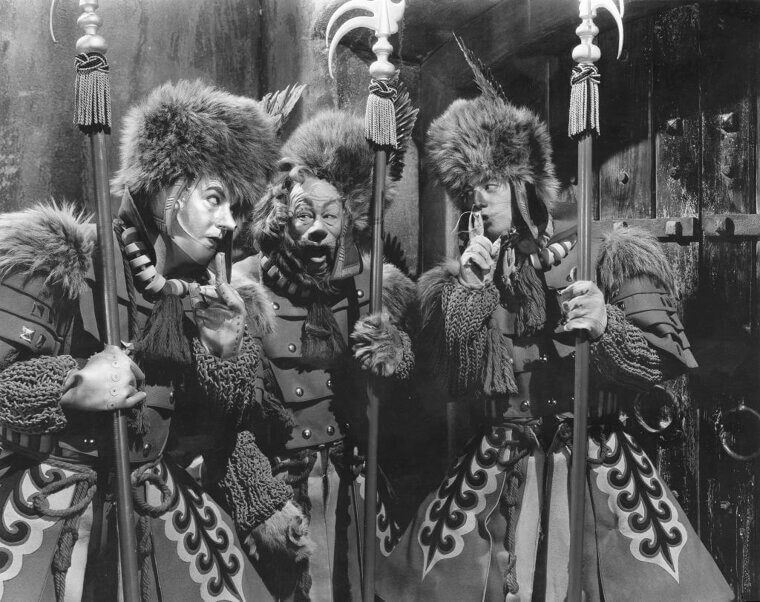Dorothy's Ruby Slippers Weren't Always Red
One of the key features of Dorthy's outfit in The Wizard of Oz is her ruby slippers. These magical slippers are an essential addition to the story, and have gone down in history as some of the most famous movie props of all time. But did you know that these ruby slippers weren't actually supposed to be red high heels? In the book, they were written as actual silver slippers.
But when MGM made it their mission to create one of the best technicolor movies of all time, they decided that silver wouldn't make the impact they wanted on screen. So, they changed them.
Buddy Ebsen Was Supposed to Be the Tinman but the Costume Almost Killed Him
The Tin Man offered oodles of comic relief in The Wizard of Oz, and most fans loved watching him in this classic movie. However, some struggle to watch it back, knowing that actor Jack Haley wasn't the first actor to take on this role. Buddy Ebsen had originally agreed to become the Tin Man for the classic movie, and even filmed many of his scenes before he had to go in for emergency surgery.
But what happened? Well, the costume department decided to use aluminum dust to make the Tin Man look more realistic. This dust then coated his lungs and stopped his blood from being oxygenated.
Judy Garland Wasn't the First Choice
Although many people would say that Judy Garland helped to make The Wizard of Oz a success, there was once a time when she wasn't going to play Dorothy. Instead, they wanted child star Shirley Temple to take on the role. At 11 years old, she was closer to the age of Dorothy, and she had a proven track record of winning over the audience at home and making them fall in love with her.
Shirley was equally as excited about taking on the role of Dorothy and working with Fox, but when MGM took over the production they decided to go with their actress, Judy Garland.
Technicolor Came at a (hot) Cost
Although The Wizard of Oz wasn't the first technicolor film to ever be released, it was the first non-animated film to ever be released. At the time, it was still a relatively unknown feature within the movie industry, and it required a lot of time, effort, and money to bring this color action to life. In fact, there were only a few cinematographers in the industry who knew how to work with this new invention.
As technology was still advancing at the time, the only way to bring off such vibrant colors was to make the studio as bright as possible - and this made the studio so hot that the actors were often soaked in sweat.
It Wasn't Originally Successful
Today, The Wizard of Oz is considered a classic movie that everyone should see at least once in their lives. It won countless awards, it's become a cult classic, and it's known for changing the face of Hollywood forever. But did you know that The Wizard of Oz wasn't originally successful? As the movie was released during the Great Depression, it was released during a time when most people didn't have the money to go to the movies.
Because of this, it didn't really gain the fame and fortune it deserved until it was released on TV during the 1950s. When it was released to the masses, everyone saw it for the epic movie it was.
The Lion Costume Was Made From Real Fur
Bert Lahr was the best and worst choice to play the Cowardly Lion in The Wizard of Oz. On the plus side, this comedic actor ad-libbed many of his famous lines for this classic movie and impressed everyone with his on-the-spot creativity. However, this came at a cost, as many of his fellow actors found him so funny they couldn't help but burst out laughing. This is particularly impressive, as Bert was very uncomfortable on set.
That's because his Cowardly Lion costume was actually made from real lion fur, which was extremely hot and uncomfortable under the boiling studio lights. Most days, he was covered in sweat.
Frank Morgan Played 5 Different Characters
When making The Wizard of Oz, MGM called upon some of their best and favorite actors to star in the movie. Frank Morgan was one of those actors, and the studio loved him so much that they decided his role as the Wizard just wasn't enough for them. So, they asked him whether he would be willing to play more than one character - and he gladly accepted the roles.
In the end, Frank played five different characters: The Wizard, Professor Marvel, The Gatekeeper, The Carriage Driver, and The Guard. None of these secondary characters were as big as the Wizard, but that's still pretty impressive.
Margaret Hamilton Was Permanently Injured Due to Her Role as the Wicked Witch
The Wizard of Oz wouldn't have been the same without Margaret Hamilton. This actress took on the role of the Wicked Witch, and she's gone down in history as one of the most incredible characters Hollywood has ever seen. And while Margaret enjoyed this role, there's no doubt about the fact that she struggled with certain aspects of filming. She was even permanently injured on the set of this classic movie.
For starters, her hands and face were burned when the production team tried to use fire as a special effect. She was hospitalized for two weeks, and had lasting scars for the rest of her life.
It Was Originally Written as a Feminist Piece
While many people see The Wizard of Oz as a fantasy musical to put a smile on your face, it's fair to say that L. Frank Baum never intended his book to be seen that way. He wrote the book to promote feminism and prove to women that they could be strong and independent and fight back against evil, but many of these feminist themes were written out when it was turned into a screenplay.
Nevertheless, The Wizard of Oz became L.Frank Baum's most famous piece of work. And while he wrote many other books an poems, none of them ever came close to the popularity of The Wizard of Oz.
The Scarecrow Outfit Left Permanent Scars
Ray Bolger landed the role of a lifetime when he was cast as the Scarecrow in The Wizard of Oz. Getting into character wasn't as easy as it may seem, though. To make him look more like a scarecrow, the costume and makeup departments covered him in itchy clothes, prosthetics, and a huge amount of makeup. However, he didn't react well to this makeup, and it permanently scarred his face as a result.
Although Ray hoped that the marks would eventually go away, they stuck around for much of his life. However, these marks did start to fade as the years went by.
Filming With the Horses Was a Nightmare
While a lot of thought was put into making the flying monkeys as scary as possible in The Wizard of Oz, not enough thought was put into the horses that we saw on our screens. Although MGM wanted the horses to be bright red, they opted to do this in a way that caused chaos in the studio. In fact, they covered the horses in red Jell-O and stuck red rhinestones to their hair and coat.
While the rhinestones weren't too much of an issue, the red Jell-O turned into a mess as the horses just wanted to lick it off their own bodies. So, getting them to stick to the program wasn't easy.
Judy Was Taken Advantage of
Although she loved to see The Wizard of Oz become a success, Judy Garland later confessed that industry executives drugged her to ensure that she would be able to keep up with the fast pace of Hollywood. This, along with her father's passing, meant that she struggled a lot with her mental health and with addiction. In fact, it was her addiction to barbiturates that ultimately led to her untimely death at just 47 years old.
The loss of this Hollywood legend hit the industry hard and shone a spotlight on the way that studios treated their actors. Thankfully, most people now remember Judy for her successes, rather than her struggles.
It's Considered Victor Fleming's Best Work - But He Didn't Stay on for the Whole Project
Every movie needs a director, and the director of The Wizard of Oz was none other than Victor Fleming. Before taking on this challenge, the Hollywood director had found success with other movies such as Bombshell, Treasure Island, and Captains Courageous. However, it was The Wizard of Oz that truly thrust him into the limelight and proved that he was a serious filmmaker. But did you know that he didn't stay for the full process?
Although Victor was on set to direct the actors, he had to leave during the production stage of the movie because he was due to start work on his next film, Gone With the Wind.
Mervyn LeRoy Had to Step in to Get the Movie Finished
We already know that Victor Fleming had to leave the production studio before The Wizard of Oz was actually finished, but that doesn't mean that there wasn't anyone in charge. He handed responsibility over to Mervyn LeRoy, who had originally signed on to be both the director and the producer. But when the director role was then given to Victor, he had to settle for just being the producer instead.
This worked in his favor when Victor had to shoot off early, though. This meant that Mervyn could step into the role he had originally been promised, and he took the opportunity in his stride.
Dorothy Was Inspired by a Real Person
Did you know that The Wizard of Oz movie was inspired by L. Frank Baum's novel, The Wonderful Wizard of Oz? And while the Wizard, the Cowardly Lion, and the Tin Man were all works of fiction, Baum was inspired by a real person when he created the character of Dorothy. In fact, Dorothy was inspired by Baum's niece, who sadly passed away when she was just five months old.
Baum knew that he needed to have a strong emotional connection to his name, and when Dorothy passed away just as he'd finished his novel, he knew that he had to change it to honor her short life.
Some Animals From the Book Were Left Out Because They Were Deemed Too Scary for Audiences
There were a few different animals in The Wizard of Oz, from Toto the dog, to the horses and the scary flying monkeys. But what you might not realize is that there were many other unique animals in the original book written by L. Frank Baum - but they were left out of the final screenplay, and MGM decided against having them in the movie. One of these unique animals was the fictional Kalidahs.
Kalidahs had the face and the stripes of a tiger but the body of a bear, but MGM ultimately decided that this hybrid animal would be too scary for young viewers. So, they left them out.
Charley Grapewin Never Wanted to Be an Actor
In The Wizard of Oz, Aunt Em has a profound impact on the main character, while Uncle Henry seems to fade into the background. While this was a stark difference from the book, in which Baum made Uncle Henry a prominent character, this seemed to suit actor Charley Grapewin very well. After all, he had never wanted to be an actor and had never had any intentions of being on the big screen.
He actually started his career as a trapeze artist before he was eventually asked to appear in a few silent films. Before too long, the ball started rolling and be became a fully-fledged actor.
Judy Was Forced to Lose Weight
Judy Garland was just 13 years old when she signed a multi-deal contract with MGM, and this was a huge achievement for the young actress. But by the time they actually started filming The Wizard of Oz, she was 17 years old - which posed a problem when they wanted Dorothy to be much younger. As a result, the production team forced Judy to lose weight and worked with the costume department to alter her feminine shape.
To make her look more childlike, they made her way into a tight corset that left her struggling to breathe. Judy later criticized how she was treated on set but simply dealt with it at the time.
Glinda Was Older Than She Looked
Whether you're team Glinda or you're more into the Wicked Witch of the West, there's no doubt about the fact that these women played a huge part in The Wizard of Oz. The actress Billie Burke had the pleasure of playing Glinda in this classic movie, and while she looked young with her fresh face and her innocent appearance, she was actually a lot older than she was supposed to be.
Billie was 54 years old when she filmed The Wizard of Oz, and she was supposed to be the younger sister of the Wicked Witch. However, she was actually 18 years older her on-screen sister.
Dorothy Was Different in the Books
With her pigtails, young voice, and her band of eccentric followers, many people believed the Dorthy in The Wizard of Oz to be extremely naive and vulnerable. She became known as the innocent victim who needed the help of her friends to find the Wizard, and she became the sweet Hollywood poster girl. However, the decision to make Dorothy young and innocent wasn't made by L. Frank Baum. In fact, Dorothy is different in the book.
When writing his book, Baum wanted to make Dorothy strong, independent, and mighty. He wanted to write a character who would be a strong role model for young girls, so that's how he wrote her.
The Munchkins Were Already Famous
While they didn't have any major speaking roles, the Munchkins were still a huge part of The Wizard of Oz. They were the ones who called Munchkin Land their home, and they captivated the audience at home. The people who took on these roles weren't completely unknown when they were given the opportunity to star in this classic movie, though. In fact, they were already known by the name of Singer's Midgets.
Singer's Midgets had made a name for themselves as a traveling singing troupe, managed by Leo Singer. It was actually Singer who cast most of the characters in The Wizard of Oz.
Clara Blandick Struggled Behind the Scenes
Although Auntie Em only had a small role in The Wizard of Oz, there's no doubt that her character had a big impact on Dorothy. She was often seen as a guiding force and offered a sense of stability for the young girl. It was Clara Blandick's job to bring this character to life, and fans could see on-screen that she was a loving and warm member of the family.
Behind the scenes, however, Clara Blandick struggled with her mental health. She battled with depression for much of her life, and eventually took her own life when she was 86 years old.
Snow White Made a Secret Appearance
Two years before The Wizard of Oz was released, the Disney movie Snow White was released to equally as impressive reviews. But did you know that the character of Snow White had a secret appearance in The Wizard of Oz? While she didn't appear on-screen, Adriana Caselotti, who voiced the Disney princess, could be heard singing in the background while the Tin Man sings "If I Only Had a Heart."
You can only hear Adriana's voice for a few seconds when she sings "Wherefore Art Thou, Romeo" in the background, but the young actress was reportedly paid $100 for this small cameo.
Frank Morgan Lived a Troubled Life
The Wizard of Oz wouldn't be The Wizard of Oz without the Wizard himself, and Frank Morgan had the pleasure of playing this iconic character. Over the course of his three-decade-long career, Frank impressed MGM so much that they awarded him a lifetime contract with the studio. So, when the role of the Wizard came up, they knew that Frank was the man for the job. He lived a troubled life, though.
Morgan battled alcoholism throughout his career and would often turn up to set with a briefcase full of alcohol to keep him hydrated throughout the day. In the end, he passed away just before The Wizard of Oz made its way onto the small screen.
Ray Bolger Played Two Different Roles
For actor Ray Bolger, bagging the role of the Scarecrow in The Wizard of Oz was a dream come true. Up until that point, he had made his mark on Broadway and in musical theater, but hadn't been able to stake his claim as a respectable actor. He wanted everyone to know his name, so he couldn't say 'yes' quickly enough when they offered him the part. But he was actually offered two parts in the end.
As well as taking on the role of the Scarecrow, Bolger was also offered the chance to become the character of Hunk. It was only a small secondary role, but it made a huge difference to Bolger's fame and fortune.
"Over the Rainbow" Was Written for the Movie
When you think of The Wizard of Oz, there's a high chance that you start singing "Somewhere Over the Rainbow" in your mind. This song is synonymous with the classic movie and was sung by Judy Garland just five minutes into the film. But did you know that the Academy Award-winning song was actually written specifically for this movie? It was, in fact, a joint effort by composer Harold Arlen and lyricist Yip Harburg.
When the film was released - both in theaters and on television - fans at home fell in love with Garland's rendition of the song. It even became her signature song, and she performed it for another 30 years before her death.
The Special Effects Were Revolutionary
When you watch The Wizard of Oz back today, it's clear to see that the movie was filmed at a time when special and visual effects were virtually nonexistent in Hollywood. But at the time, The Wizard of Oz was trying something that very few other studios had tried to do - and their ability to pull off these special effects is what made it so revolutionary and so famous.
One of the most impressive pieces of special effects from the 1939 movie was when the Wicked Witch magically appeared out of a ball of fire. This was something that most people hadn't seen before.
Dorothy Was Inspired by Mary Ann Summers
In 1964, the world fell in love with the popular television show Gilligan's Island. This show allowed viewers to fall in love with the likes of Gilligan and Captain Jonas Grumby, but what you might not realize is that this show also inspired the main character in The Wizard of Oz. In fact, the character of Dorothy was inspired by Mary Ann Summers, both in terms of her personality and her looks.
You can see here just how alike they were. Not only did they both have pigtails and wear a gingham dress, but they were also both from the town of Winfield in Kansas.
The Sky Message Wasn't as It Seemed
One of the most memorable scenes in The Wizard of Oz is when the Wicked Witch flies into the air and writes "Surrender Dorothy" with her broom. In today's day and age, this would have been created by digital special effects - but they didn't have those back in the day. Instead, the production team filmed this scene in real-life and used a tank full of paint, water, and milk to bring it to life.
They then used a tiny model of the Witch and attached it to a needle and thread to write the letters in the "sky." At the time, it was incredibly clever.
Toto Was a Trained Animal Actor
The Wizard of Oz wouldn't be The Wizard of Oz without Toto in it. Dorothy's dog stole the hearts of audience members as they watched the small fluff ball on their screens, but behind-the-scenes, things were a little different. In fact, the male dog Toto was actually played by a female dog called Terry - and she was a trained animal actor who had mastered the art of performing on set.
Over the course of her life, the Cairn Terrier appeared in numerous movies, including Tortilla Flat and Bright Eyes. However, her work in The Wizard of Oz put her in the realm of Hollywood animal legend.
The Wizard of Oz Had a Cameo in Selena
As The Wizard of Oz is such a classic movie, it should come as no surprise to learn that it has influenced many books, movies, and TV shows since its release. And while it's normally the stories and the characters who have an impact on popular culture, it's fair to say that the signature song from the film has also had an impact. In fact, "Over the Rainbow" even had a Cameo in the movie Selena.
In the movie, which stars Jennifer Lopez, a young Selena could be seen singing to the patrons of her father's restaurant. Her song of choice was "Over the Rainbow" from The Wizard of Oz.
It's Not the Only Movie
Since the release of The Wizard of Oz, the story has been used as inspiration for other movies and even Broadway shows. But the classic movie that we know and love wasn't actually the first iteration of this incredible story. Before The Wizard of Oz came into our lives, there had already been a few remakes. The first came in the form of the 1914 movie called His Majesty, the Scarecrow of Oz.
Not only that, but L. Frank Baum also worked with Hollywood director Larry Semon in 1925 to bring his story to life, but it didn't make the mark that The Wizard of Oz did.
The Screenplay Wasn't Written by One Person
Turning a book into a screenplay isn't an easy task, and even some of the best screenwriters in the business struggle to turn a brilliant book into an even better movie. And while you might assume that The Wizard of Oz screenplay was written by a single person, it was a little more complicated than that. In the end, the final draft was a combination of multiple scripts written by multiple people.
Famous writer Ogden Nash even wrote a humorous screenplay for the movie, but it was turned down by Victor Fleming and his team. Instead, he decided to merge multiple scripts from Edgar Allen Woolf, Noel Langley, and Florence Ryerson.
It Was Lucky Number 10
Although we already know that The Wizard of Oz wasn't the first movie of its kind to follow L. Frank Baum's story, did you know that it was actually the 10th movie of its kind? Before Judy Garland stepped into the bright red shoes of Dorothy, nine other actresses had taken on the role for other projects. And what's so amazing about this is that every iteration of this story was completely different.
Some were fun and humorous, others were scary and frightening, and some tried to find a balance in between. And the fact that The Wizard of Oz was the only one to make a mark makes it even more impressive.
Judy Garland Had Talented Kids
Judy Garland made her mark on Hollywood when she was a child, so it was strange for fans of The Wizard of Oz to watch her grow up and have a family of her own. However, Judy struggled on a personal level and was married five times over the course of her short lifetime. From those five marriages came three children: two daughters, Liza Minelli, Lorna Luft, and a son, Joey Luft.
Of course, you might already be familiar with her daughters, as both Liza and Lorna followed in their mom's footsteps and became famous in their own right. Liza is considered to be more famous, though.
Toto Is Still the Most Famous Hollywood Dog
Over the course of Hollywood history, there have been many famous dogs: Lassie, Marley, Beethoven, Benji, and even Einstein from Back To The Future. And while every famous dog has its own place in the movie world, none seem to have made such a big impact as Toto from The Wizard of Oz. The Cairn Terrier was a wholesome addition to the movie, and it was clear to see that she was a professional.
After Toto's inclusion in the movie, Cairn Terriers rose in popularity, and people across the world wanted to add one to their families. Now, they're still considered the most common terrier breed.
It's Made Its Way to Broadway
By now, you should know that The Wizard of Oz has had a huge impact on popular culture. It's also inspired many other books, movies, and even shows. The most famous of them all is the musical Wicked, which has made its way across the world and been performed on some of the biggest stages around the globe. To be more specific, however, Wicked is based on the 1995 Gregory Maguire novel Wicked: The Life and Times of the Wicked Witch of the West.
But this book is also based on L. Frank Baum's famous book. So, all of these creations are loosely based on the same story from the one and only Baum.
Margaret Hamilton Was a Legend
Like many of the other actors in The Wizard of Oz, this classic movie is considered her most iconic role. But that's not to say that Margaret Hamilton was a nobody who needed the classic movie to thrust her into the spotlight. By the time the actress was cast as the Wicked Witch, she had already starred in a whopping 25 movies and won over fans across the globe with her talent.
Throughout her career, she was also in the minority of actors who didn't have a contract with a studio. So, she relied on her own talent to book these jobs.
Judy's Daughter Followed in Her Footsteps
The Wizard of Oz thrust Judy Garland into the spotlight and proved to the world that she was a talented singer and actress, but it's clear to see that the apple doesn't fall too far from the tree. Judy's daughter, Liza Minelli, also followed in her footsteps and is now considered to be one of the most famous women in Hollywood. In fact, some even say that she's more famous than her mother.
Over the course of her impressive career, Liza has made her mark on Broadway and on the big screen - but it's been suggested that her mom was often jealous of her success.
It Was Late to the Fame Game
At the time of its release, The Wizard of Oz just couldn't seem to compete with Victor Fleming's other movie, Gone With the Wind. When compared against each other in terms of box office success, Gone With the Wind always came out on top. But when The Wizard of Oz was shown on TV, the tides shifted, and people began to realize the beauty and the magical nature of Oz and its characters.
And while it was late to the fame game, most people now agree that The Wizard of Oz is much better than Gone With the Wind - and in terms of overall popularity, Oz wins.

